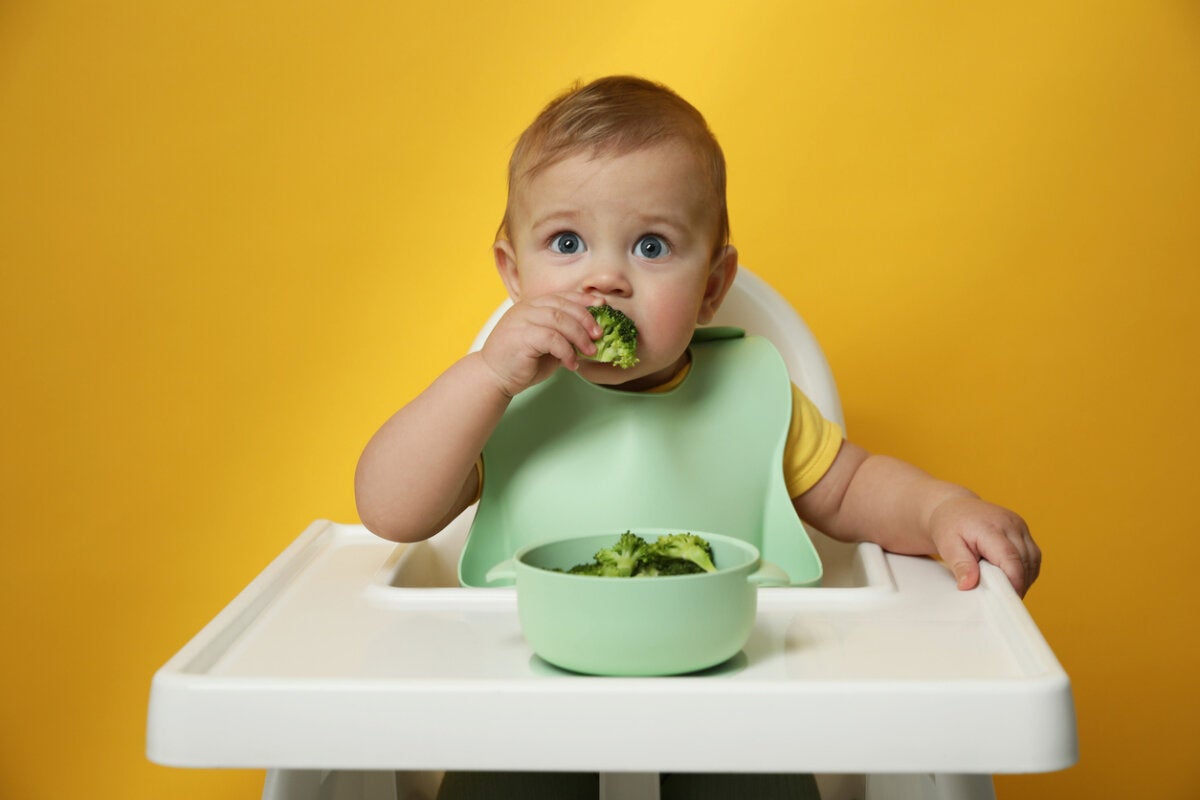8 Myths Regarding Complementary Feeding
Here are the myths regarding complementary feeding that you should be aware of when you start the process with your child.

The time has come! After six months, your baby will begin a new stage in its feeding to complement breast milk with new foods. Many doubts arise arise at this time. Among them, which foods should you offer your child and which should you avoid? To get quick answers, new parents often consult family or friends on the subject. However, much of this information is based on myths regarding complementary feeding. If you go about it the wrong way, your baby will suffer the consequences!
For that reason, in this article, we’ll talk about eight common myths about complementary feeding: Are there any truth to them? Also, we’ll answer where the risks come from and the risks they pose to children. Of course, the best answers will always come from your pediatrician. So, don’t forget to go for a consultation!
Where do myths regarding complementary feeding come from, and what are their risks?

Myths regarding complementary baby feeding are based on popular beliefs, cultural practices, and outdated practices, as well as the spread of misinformation through unreliable channels. In the end, complementary feeding is distorted, and infant health is put at risk.
In this context, and as an article published by the journal Infant Nutritional Physiological Phenomena warns, the medical community is increasingly concerned about these myths because they can have an impact on the transmission of non-communicable diseases. For example, excess weight gain, diabetes, celiac disease, and allergies, among others.
So, it’s time to get rid of the myths regarding complementary feeding in babies. Which of these have you heard before?
Common myths regarding complementary feeding in babies
The myths and erroneous beliefs surrounding complementary feeding can generate confusion and put the health of the little ones at risk. So, here we’re going to clear up each of these myths.
1. Babies should start complementary feeding before four months of age
That’s not the case! As reported in a paper published in the journal Frontiers in Pediatrics, most pediatric health organizations agree that the ideal age for introducing new foods to babies is six months. Others even mention four months, but no sooner.
There are several reasons for this. One of them is explained in an article published in the journal JAMA Pediatrics. This article considers waiting an appropriate period of time for the baby to develop the intestinal bacteria (microbiome) that serve as a defense against some diseases, thus strengthening his immune system.
Another reason is that the baby’s digestive system has to be prepared to digest new foods. Before 4 to 6 months, the baby is still receiving the enzymes for digestion found in breast milk. In other words, exclusive breastfeeding helps them mature their digestive process.
Also, the possible development of allergies also justifies starting new foods after six months of age.
See also: 6 Foods to Start Complementary Feeding
2. Solid foods help babies sleep better
This isn’t true! Baby’s sleep is influenced by factors that have nothing to do with complementary foods. An article published in the journal Children states that sleep cycle regulation progresses naturally with the age of the baby. By six months, most babies are able to sleep through the night.
3. Foods need to be introduced in a certain order
False! It used to be believed that there had to be a specific order. For example, cereals first, then fruits, then vegetables. However, the American Academy of Pediatrics assures us that there’s no evidence that if you give fruits first, babies will later reject vegetables because they don’t like the taste.
Therefore, it’s best to introduce the foods preferred by the family, as long as they are indicated within a healthy and balanced diet for the baby and supervised by the pediatrician and nutritionist.
4. Avoid allergenic foods until after the first year
The opposite is true! A study published in the The New England Journal of Medicine states that early and regular exposure to allergenic foods, such as peanuts, can decrease allergies in children prone to developing allergies.
There’s no evidence to support that delaying the introduction of foods such as fish, eggs or peanuts themselves delays the onset of allergies.
5. Babies should finish all food on their plate
False! There’s something to consider in little ones when it comes to food quantities: Your baby’s gastric capacity. An article published in the journal Acta Paediatric reveals that a baby’s stomach capacity at birth is only 20 milliliters (less than an ounce). From there, it increases in capacity to reach between 4 and 6 ounces by the time it is six months old.
By 12 months, they can consume 8 to 10 ounces. But every child responds differently, so watch for signs of fullness during feedings, such as closing the mouth, turning the head, or losing interest in the food. Your baby will eat as much as they need to feel satisfied!
6. Don’t give cow’s milk in the first year of life
This is true! The Centers for Disease Control and Prevention (CDC) reiterates that cow’s milk shouldn’t be given to infants as a supplement before one year of age. The protein and mineral values of cow’s milk exceed the baby’s renal capacity. You have to wait after 12 months for their kidneys to mature.
7. Add salt or sugar to purees to make them taste better
No! In complementary feeding, foods should be given in a natural way so that babies can perceive the new flavors and develop their preferences. The World Health Organization recommends not using salt until after two years of age. This is due to the baby’s low renal maturity.
There are also restrictions regarding sugar, as the general recommendation is to restrict it to less than 5% of the total caloric intake. Excess weight, obesity, and the risk of tooth decay are reasons for its control in a baby’s new diet.
8. Be careful with consistency to avoid choking
True. Although there’s a new approach to infant feeding known as baby-led weaning (BLW) in which foods are introduced in solid form, close parental supervision is critical because of the risk of choking.
Traditionally, complementary feeding starts with purees and mashed foods. Gradually, we move on to lumpier purees and mashed foods until more solid foods are introduced. This is to avoid the risk of choking.
Why is it important to carry out complementary feeding correctly?
There are several reasons why the introduction of new foods should be done correctly and why parents shouldn’t be misled by the myths regarding complementary feeding. Some of the reasons are the following.
Babies must receive adequate nutrition
At this stage, new foods “complement” breast milk, as the baby’s needs increase during growth. Therefore, it’s advisable to combine a variety of foods of animal and plant origin to meet the new nutritional demands.
Complementary feeding helps with allergy prevention
Early introduction of allergenic foods can help prevent the development of food allergies.
It helps little ones develop proper feeding skills
Complementary feeding is an opportunity for babies to develop oral motor skills and hand-eye coordination and learn to chew and swallow solid foods.
It establishes healthy eating habits
A new process in infant feeding begins, and with it, the opportunity to establish long-term healthy eating patterns. The foods that are incorporated can influence the child’s future eating habits and preferences.
It can prevent long-term health problems
Introducing the right foods from an early age and establishing new habits reduces the risk of obesity, type 2 diabetes, and cardiovascular diseases, among others.
What to do if you have any other doubts?
If you have any other doubts, consult your pediatrician immediately to clarify them. Remember that it’s very important not to make decisions without first being sure and well-advised. Complementary feeding is such an important process that we can’t allow ourselves to be influenced by false myths that represent risks for the baby’s nutrition and health.



